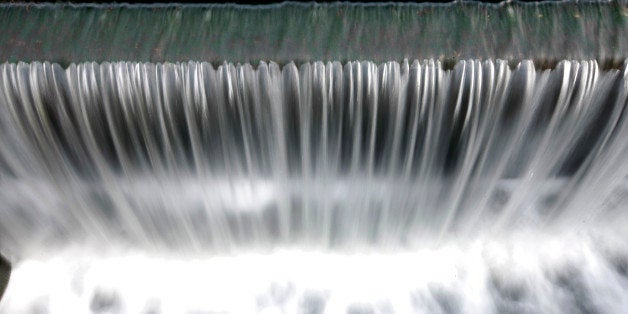
Water management is essential to maximizing the resources that we have. But water management demands a lot of energy. Energy costs money and increases the greenhouse-gas emissions. Water- and wastewater-treatment facilities are normally the single-largest electricity consumer for a municipality. Typically water- and wastewater-treatment processes account for 25-40% of the municipality's electricity bill -- energy that can be saved and money that can be freed up and put to better use elsewhere. The answer lies in understanding that the technology and knowledge is available to make water-management systems energy neutral.
So why is water and wastewater management so energy intensive? The high consumption is related to the energy-intensive processes but also its continuous-operation cycle, 24/7 and 365 days annually. When clean water is distributed to consumers, it is pumped through the pipework at high pressure. The pressure corresponds to the pressure needed at the furthest end or highest altitude of the system. If the system is not divided into sections, the initial pressure has to be very high. The high pressure strains the pipes to the extent that the United Nations highlights that leakage rates of 50% are not uncommon in urban-distribution systems. Here we are talking fresh water -- one of the scarcest resources we have, just pouring into the ground!
Once utilized, the water, now wastewater, is pumped through a separate piping system from the consumer to the treatment facility. Here is it treated, and the cleaned water re-entered into the natural-water cycle. All this pumping and treatment requires energy. However, it is possible to reduce energy consumption, maximize energy production, manage leakages and reduce maintenance and replacement of pipes. It is possible to the extent that the whole system can become energy neutral.
By managing the pressure in the drinking-water pipework by dividing it into sections that are individually controlled, leakages can typically be reduced by 30-40%. This is achieved by using technologies like Danfoss variable-frequency drives to control the pressure in the pipes. This not only saves precious drinking water, but also saves energy.
In Aarhus Water Ltd, we supply water and purify wastewater from more than 300,000 customers in the Danish city of Aarhus. We have transformed the Marselisborg Wastewater Treatment Plant from an energy consumer to an energy provider. In traditional wastewater-treatment plants, the energy that is produced is nowhere near enough to actually run a wastewater-treatment plant. But here in Aarhus it is. The plant is now in fact a power station -- a bio refinery where energy is produced from wastewater. Good news for our local budgets but also for an increasingly energy-hungry world.
Production of energy from wastewater is no new invention. However, it's new that a wastewater-treatment plant can produce as much as 192% energy -- based on normal household wastewater. Hopefully this ceases to be a novelty. Because scaled up, it means that the huge energy consumption from water and wastewater facilities could be avoided, turning the single-largest electricity consumer in municipalities into an energy-neutral party.
The 192% comes from combining:
· 130% electricity production (30% excess electricity)
· Excess heat production of about 2.5 GWh/year (used in local district-heating system)
The wastewater-treatment plant now produces enough energy to cover 94% of all the energy used for the whole water cycle, from water production, water distribution over wastewater pumping to wastewater treatment in the 200,000-persons catchment area.
In the very near future, the expectation is to get above 100% and so have made this highly energy consuming industry completely energy neutral.
Naturally this has grabbed the attention of many around the world, and we in Aarhus Water are pleased to share. As an example we are working with a delegation from Chicago to achieve similar results in their city. The hope is that many more will follow, because lack of water and climate change are among the top three global risks, according to the World Economic Forum. Energy scarcity is a global challenge we have yet to solve. However, pioneering solutions that can help meet these challenges are ready to be replicated.
This post is part of a "Nordic Solutions" series produced by The Huffington Post, in conjunction with the U.N.'s 21st Conference of the Parties (COP21) in Paris (Nov. 30-Dec. 11), aka the climate-change conference. The series will put a spotlight on climate solutions from the five Nordic countries, and is part of our What's Working editorial initiative. To view the entire series, visit here.